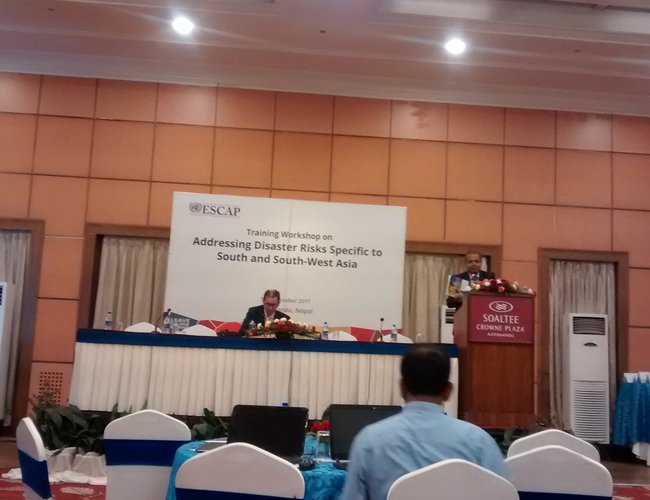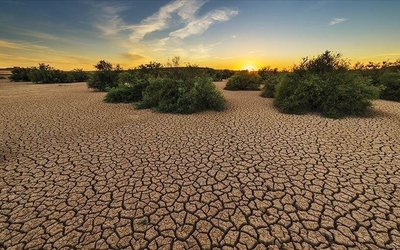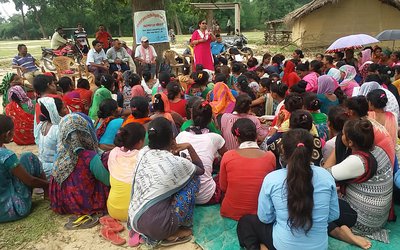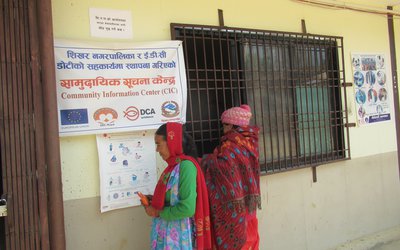
Risks from natural hazards is gradually outpacing resilience in South and South-West Asia and has the potential to reverse hard-won development gains in the subregion, according to a new report by the United Nations Economic and Social Commission for Asia and the Pacific (ESCAP).
In 2016 and 2017 alone, avalanches, snowfall and rain-related disasters have caused considerable damage in Afghanistan, while torrential monsoon rains in Bangladesh, India and Nepal have killed over 900 persons and affected almost 41 million people. While the subregion continues to develop quickly, it is still home to a large portion of the world’s absolute poor.
The Asia-Pacific Disaster Report 2017 shows that the poorest and most vulnerable sections of the society are disproportionately affected by these disasters, which can very quickly strip poor people of their livelihoods, pushing them back into absolute poverty or trapping them in an intergenerational transmission of poverty.
Disasters also widen socioeconomic disparities and exacerbate existing inequalities, according to the report. Launching the report in the subregion, Mr. Michael Williamson, Head, a.i, Subregional Office for South and South-West Asia, ESCAP, underscored that “the 2030 Agenda for Sustainable Development recognizes the devastating and pervasive impacts that natural disasters can have and incorporates the principles of disaster risk resilience as a central tenet of the promise to leave no one behind.”
“In South and South-West Asia, protecting livelihoods from the impact of disasters must move to the top of the policy agenda, with the recognition that even the most efficient early warning systems may not be sufficient,” added Mr. Williamson. Beyond the human costs, research undertaken by ESCAP indicates that in the subregion, floods have cost 94 billion dollars in estimated damages within the past 15 years. By 2030, 40 per cent of global economic losses from disasters will be in the Asia-Pacific region, with the least developed countries suffering from annual losses of around 2.5 per cent of GDP.
The launch of the Asia-Pacific Disaster Report 2017 in Nepal was part of a two-day Workshop on Addressing Disaster Risks Specific to South and South-West Asia in Kathmandu which brought together government officials and disaster management specialists from 10 countries in the subregion. Delivering the Keynote Address at the Workshop, Mr. Arbind Kumar Mishra, Hon. Member, National Planning Commission, Nepal stated that ‘Disasters affect everyone but impact the poor and vulnerable people the most’. ‘Low-income countries account for only about 9% of the world’s disaster.
Yet, they experience 48% of fatalities’, Mr. Mishra said. He underscored the timeliness of the meeting after the approval by the Parliament of Nepal of a long-awaited disaster mitigation regulation act and underscored the importance of the Workshop to identify ways to convert risks into resilience. Nepal ranks as the fourth most climate-vulnerable country in the world.
The Asia-Pacific Disaster Report aims to assist policymakers, in both public and private sectors, to better understand disaster risk and resilience and take the many opportunities for action, especially in risk hotspots where a greater likelihood of change coincides with a higher concentration of poor, vulnerable and marginalized people.
Asia and the Pacific is the region most affected by natural disasters which hit hardest at the poorest countries and communities. And on present trends, as more migrants crowd into slums and shanty towns in Asia-Pacific cities, whole communities are likely to see their homes and livelihoods shattered or washed away by the wilder forces of nature.
This edition of the Asia-Pacific Disaster Report, looks at the extent and impact of natural disasters across the region and how these intersect with poverty, inequality and the effects of violent conflict. But it also shows how scientific and other advances have increased the potential for building disaster resilience and ensuring that even in the most extreme circumstances people can survive disaster impacts and rebuild their communities and livelihoods.
Disaster resilience is a key element of the 2030 Agenda for Sustainable Development. The Sustainable Development Goals are based on the premise of reaching absolutely everyone. When the drought is assessed, when the flood warnings are broadcast, when the tsunami siren sounds, the aim is to ‘leave no one behind’. If governments are to fulfil this ambition, and protect their most vulnerable people, they will need to ground national development strategies firmly in disaster resilience.
- MELAMCHI WATER SUPPLY: No Interruption During Monsoon
- Jun 25, 2025
- KOREAN RETURNEES: Successful Integration
- Jun 25, 2025
- UPPER TRISHULI-1: Engaging With Local
- Jun 25, 2025
- IME GROUP: Twenty Five Years Of Journey
- Jun 24, 2025
- NEPAL’S AIR POLLUTION: A Growing Health Concern
- Jun 24, 2025













